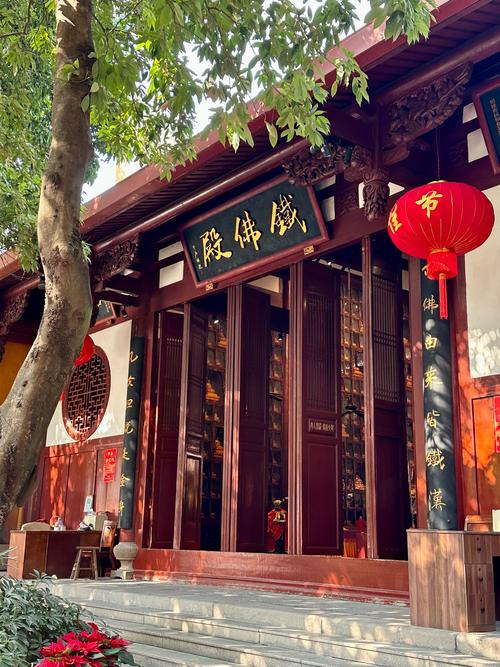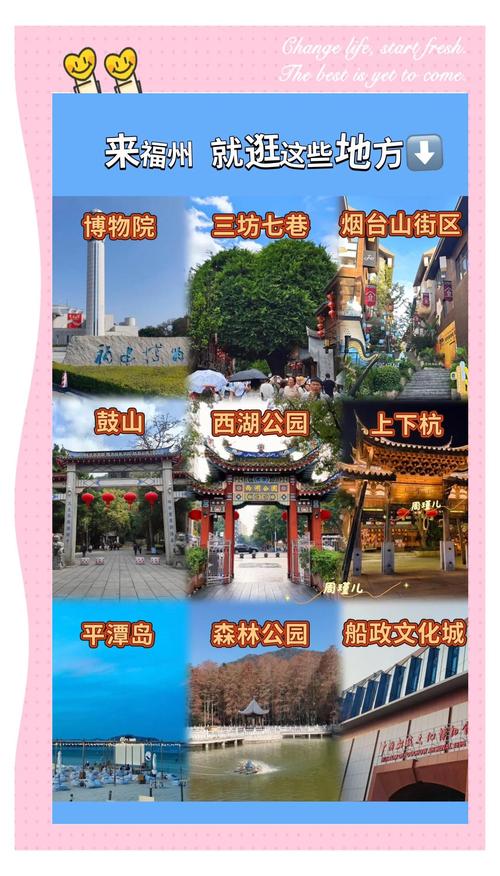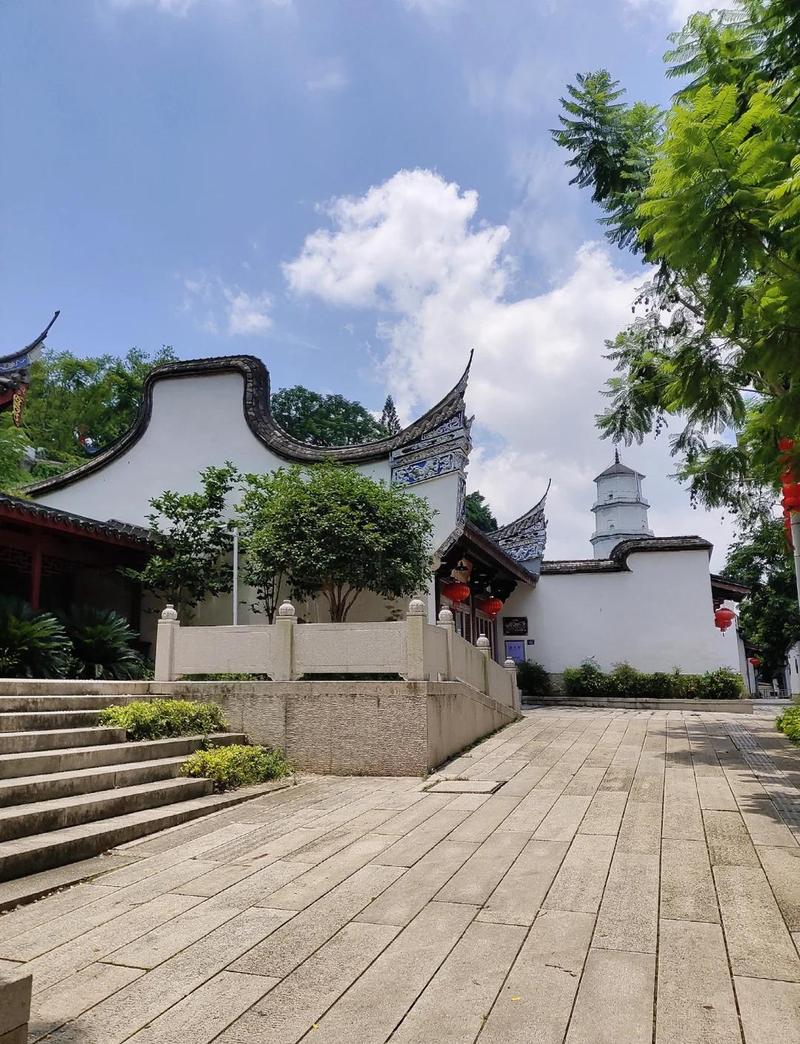福州作为福建省的省会,是一座历史悠久又充满活力的城市,既有深厚的历史文化底蕴,也有优美的自然风光,好玩的地方非常多,可以满足不同游客的需求。

(图片来源网络,侵删)
下面我为你分类整理了一份超全的福州旅游攻略,你可以根据自己的兴趣和时间来选择。
历史文化 & 古厝风情游
福州被誉为“有福之州”,也是中国“国家历史文化名城”,三坊七巷是必打卡之地。
三坊七巷
- 简介:这是福州历史文化的缩影,被誉为“中国城市里坊制度活化石”,这里由衣锦坊、文儒坊、光禄坊“三坊”和杨桥巷、郎官巷、塔巷、黄巷、安民巷、宫巷、吉庇巷“七巷”组成。
- 看点:
- 古建筑群:林则徐纪念馆、严复故居、水榭戏台、小黄楼等名人故居和古建筑遍布其中,每一座都讲述着一段历史。
- 慢生活体验:漫步在青石板路上,感受“一片三坊七巷,半部中国近现代史”的厚重,巷子里有许多特色小店、咖啡馆、文创店和福州小吃。
- 夜景:夜晚的三坊七巷灯火辉煌,别有一番韵味。
- 推荐时长:半天到一天
- 小贴士:建议请一个讲解员或使用语音导览,否则可能会错过很多建筑背后的精彩故事。
福州林则徐纪念馆
- 简介:位于三坊七巷旁,是为纪念中国近代“开眼看世界第一人”林则徐而建的专题性纪念馆。
- 看点:
- 虎门销烟:馆内有详细的图文、模型和实物,生动再现了虎门销烟的历史场景。
- 林则徐生平:全面展示了林则徐的生平事迹、思想和精神。
- 园林环境:馆内环境清幽,有亭台楼阁,是学习和缅怀的好去处。
- 推荐时长:1-2小时
鼓山
- 简介:福州最著名的风景区,被誉为“闽山第一”,它离市区很近,是市民登山、休闲、锻炼的好地方。
- 看点:
- 涌泉寺:山上的千年古刹涌泉寺,香火鼎盛,寺内有一口“千年泉”,泉水清冽甘甜,寺庙规模宏大,建筑精美。
- 登山步道:可以选择乘坐缆车或观光车上山,也可以选择徒步,沿途风景秀丽。
- 摩崖石刻:山上遍布历代文人墨客的摩崖石刻,非常有文化气息。
- 推荐时长:半天
自然风光 & 山水休闲游
福州依山傍水,山水资源极其丰富。
福州国家森林公园
- 简介:中国首批十大国家森林公园之一,是福州的“城市绿肺”。
- 看点:
- 苏铁园:拥有全国规模最大的苏铁培育基地。
- 竹类观赏园:各种竹子种类繁多,是天然的氧吧。
- 鸟语林:可以观赏到各种珍奇的鸟类。
- 森林步道:适合徒步和野餐,亲近自然。
- 推荐时长:半天
鼓岭
- 简介:位于鼓山之上,是一个海拔800多米的避暑胜地,在近代,这里是许多外国驻福州领事馆官员和商人的避暑之地,留下了许多风格独特的百年老别墅。
- 看点:
- 百年别墅群:漫步在鼓岭,可以看到一栋栋充满异国情调的老别墅,仿佛穿越了时空。
- 宜人气候:夏季平均气温比市区低5-8℃,是绝佳的避暑之地。
- 柳杉王公园:有一棵据说有1300多年历史的巨大柳杉。
- 推荐时长:一天(适合自驾或包车前往)
福州西湖公园
- 简介:福州最古老的公园之一,有1700多年的历史,虽然名字叫“西湖”,但与杭州西湖相比,它更小巧精致,充满了福州本地的韵味。
- 看点:
- 古桥与古塔:公园内有著名的古桥(如柳堤)和古塔(如开化寺)。
- 休闲漫步:是当地人晨练、散步、划船的好地方,非常惬意。
- 夜景:西湖的夜景也很有名,灯光璀璨。
- 推荐时长:2-3小时
宗教信仰 & 禅意体验游
涌泉寺(鼓山)
- 简介:如前所述,涌泉寺是鼓山的灵魂所在,是福州香火最旺的寺庙之一。
- 看点:
- 三宝:寺内有“三宝”闻名天下——千年铁树、明代“金刚经”铁塔和“千年泉”。
- 祈福:可以在这里虔诚祈福,感受佛教文化的宁静与庄严。
- 推荐时长:1-2小时(通常与鼓山游览结合)
崇福寺
- 简介:福州五大禅林之一,是福州现存最古老的寺院之一,比鼓山的涌泉寺还早建立。
- 看点:
- 清净幽深:相比涌泉寺,这里更为清幽,游客较少,适合静心。
- 素斋:寺内的素斋非常有名,味道很好,值得一试。
- 推荐时长:1-2小时
美食寻味 & 市井生活游
来福州,一定不能错过地道的福州美食!

(图片来源网络,侵删)
老药洲
- 简介:一个充满烟火气的老街区,是体验福州本地人生活的绝佳地点。
- 看点:
- 地道小吃:这里汇集了福州最地道、最平民的小吃,如鱼丸、肉燕、锅边糊、花生汤、海蛎饼等。
- 市井风情:感受最真实的福州生活气息,比旅游区更有味道。
三坊七巷(美食区)
- 简介:在游览古厝的同时,品尝福州特色小吃。
- 推荐美食:
- 同利肉燕老铺:吃一碗正宗的“肉包肉”。
- 永和鱼丸:福州鱼丸的代表之一。
- 木金肉丸:另一家非常有名的鱼丸店。
- 叶同学花生汤:香甜软糯的花生汤,是绝佳的饭后甜点。
达明美食街
- 简介:一条现代感十足的美食街,晚上非常热闹。
- 看点:
- 海鲜大排档:可以吃到新鲜的海鲜。
- 各地风味:除了本地菜,这里也有各种全国各地的美食。
周边古镇 & 一日游
如果时间充裕,可以去周边的古镇感受不一样的风情。
闽清县宏琳厝
- 简介:世界上最大的古民居单体建筑,被誉为“民间故宫”。
- 看点:
- 规模宏大:建筑布局严谨,功能齐全,是研究古代民居建筑的活标本。
- 建筑艺术:精美的木雕、石雕、砖雕随处可见,工艺精湛。
- 推荐时长:半天(距离市区较远,建议自驾或包车)
闽侯县昙石山文化遗址
- 简介:中国东南沿海地区重要的史前文化遗址,揭示了数千年前先民的生活。
- 看点:
- 博物馆:出土了大量陶器、石器、贝器等文物。
- 考古体验:可以了解福建文明的起源。
- 推荐时长:2-3小时
行程推荐
- 一日游(经典市区):三坊七巷 → 林则徐纪念馆 → 福州西湖公园 → 晚上在达明美食街或三坊七巷吃晚餐。
- 两日游(深度文化+自然):
- Day 1:三坊七巷 → 林则徐纪念馆 → 晚上品尝老药洲小吃。
- Day 2:上午鼓山(含涌泉寺)→ 下午福州国家森林公园。
- 三日游(悠闲全景):
- Day 1:市区文化游(同两日游Day 1)。
- **Day

(图片来源网络,侵删)




